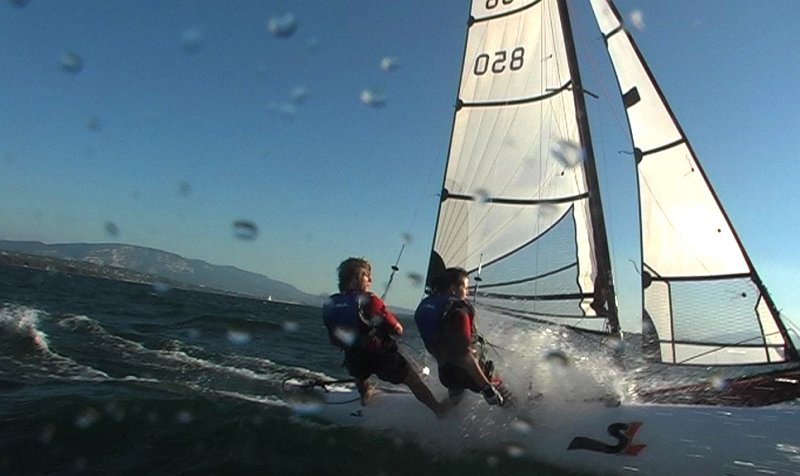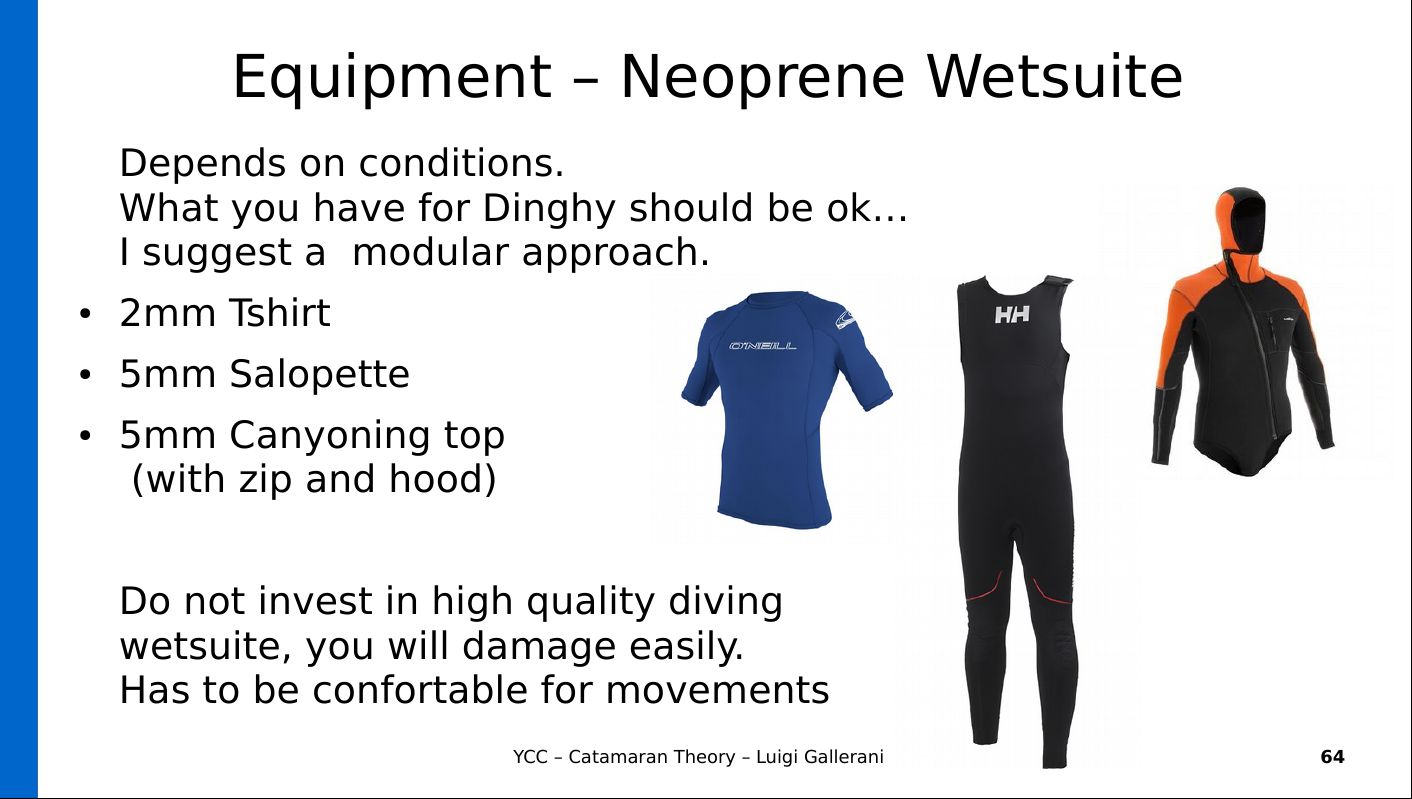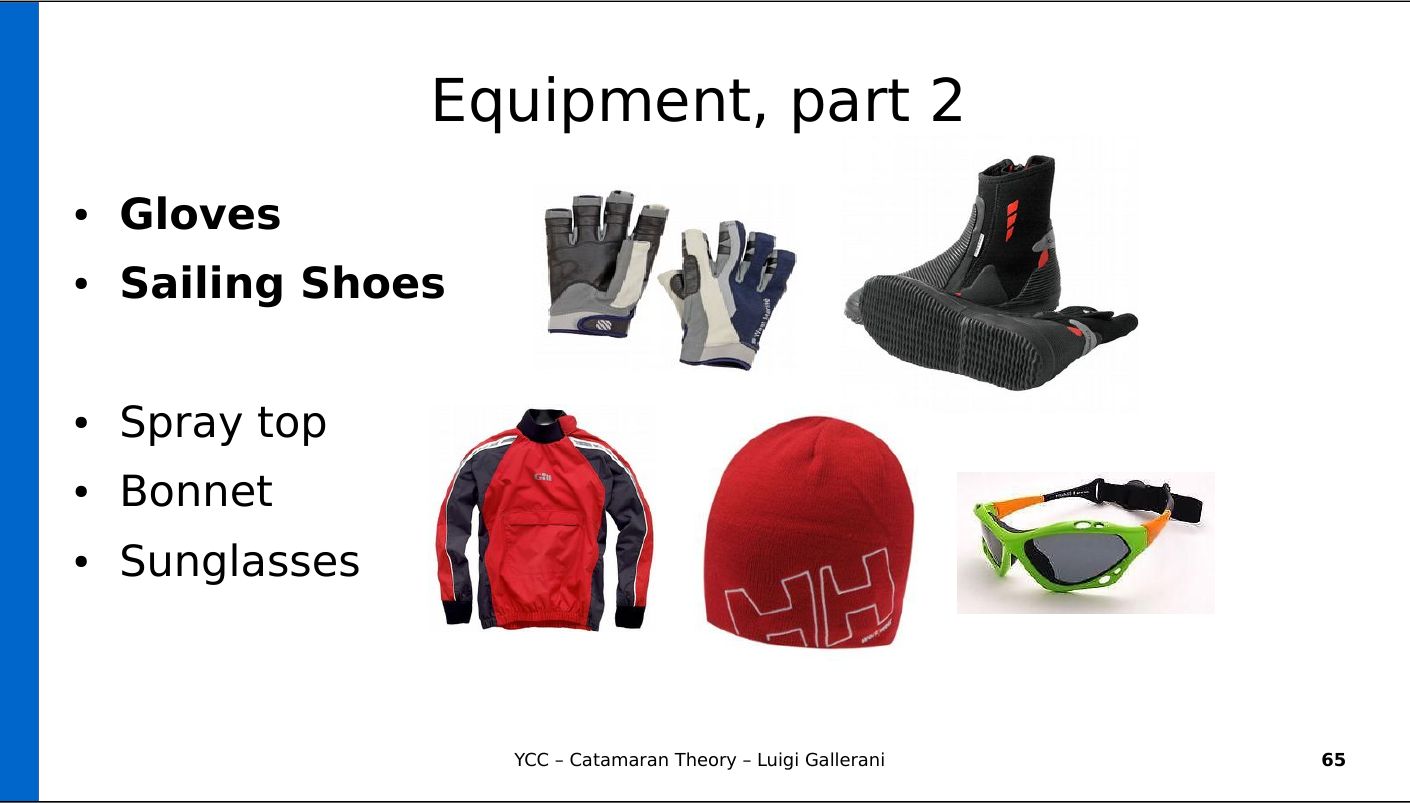
 YCC Level 2: Advanced Catamaran Course
YCC Level 2: Advanced Catamaran Course

Catamarans are the fastest boats we have in the YCC club. Because of their speed and power, they are for sure the most challenging and demanding boat to sail.
For many years, the most experienced catamaran skippers of the club, are happy to offer an Advanced Catamaran course,
that will give you the bases of the knowledge needed to pass the EC key test (but, you will have to do a lot of practice yourself!).
Catamaran students are expected to have quite a good sailing skills matured on D or Y, as speed and dynamism are essential ingredients to master a large sail area, the double trapeze, sailing on a single hull or the recovery from a capsize.
One of the most challenging maneuver you will learn during the course, are the outing and re-entry in the port.
Because of the size of the boat and ithe layout of the harbour, Port Choiseul is
not an easy landing place for catamaran: once you are engaged in the channeli there is no possibity to turn around, so mistakes can be costly. Wind conditions on the lake can change much faster than on the sea, and catamarans becomes difficult to handle when wind is around 3-4 bft. We are proud to keep very
high quality standards in the preparation of catamaran students, for this reason, this course is called... Advanced and not only Catamarans :-)
Eligibility
Any active YCC member who:
- holds either a D license or a Y license and
- has been offered a place to the course via the lottery
- has successfully enrolled, and
- has a wet-suit or a dry-suit available at the time of the practical classes.
Contents of the Course
The EC course prepares for the EC test.
Once you have passed the EC test, you are entitled to use the YCC SL16, Nacra 15 (in foiling, and non-foiling configurations), Tornado and Hobie Tiger as skipper.
The course consists of:
- theory classes;
- a minimum of 5 practical classes on a catamaran;
- practice sessions, usually on Thursday evenings;
- optional participation in a regatta;
- help in maintenance of the boats.
Participants in the EC course are, at the start of the course,
deemed to:
- be good dinghy or yngling sailors;
- understand basic sailing terminology;
- be able to make the basic knots;
- know the priority regulations on the lake as summarized in
the booklet Naviguez sur les eaux suisses !,
and given in full in the
LNI
and
ONI;
- know the YCC rules.
Equipment Needed

 Please see the Luigi Theory lesson, for a full example with many pictures, or ask the course coordinator. You need the same equipment used for a dinghy in high wind conditions.
Note that on catamaran, the apparent wind is much higher. As you go faster, you will get cold quicker. You need to equip yourself for much higher wind conditions than you would do on a dinghy.
Please see the Luigi Theory lesson, for a full example with many pictures, or ask the course coordinator. You need the same equipment used for a dinghy in high wind conditions.
Note that on catamaran, the apparent wind is much higher. As you go faster, you will get cold quicker. You need to equip yourself for much higher wind conditions than you would do on a dinghy.
- Neoprene wet-suite 5 mm (we recommend combination lower body, upper body, to be more flexible in different season) or dry-suit.
- Internal layers (neoprene swim t-shirt under wetsuit or fleece under dry-suit) or a spray top will provide additional protection.
- Neoprene shoes for sailing
- Sailing gloves to hold ropes
- wind bonnet / sunglasses / sun-cream... depending on the weather.
- Swimwear and a large towel to change and dry.
- Sailing knife, headlamp, Optional: tiny dry-bag
- Safety equipment (refer to theory catamaran lesson)
On Catamarans everything gets wet and many fall in the water, so you should not bring anything that is not waterproof or designed to stay
in the water. If you have lenses or googles for your sight, be sure you are confident swimming with them or they are properly attached. No wallet,
mobile phones, or non waterproof camera can be taken on board, except in case you have a full waterproof camera (like action cameras) or you put and secure your objects in a small soft drybag.
Teacher will show where we lock our personal stuff, but, in any case, the YCC club cannot take any responsability of the personal objects left or lost during the activity.
Practical Classes
These sailing outings take place under the responsibility of your teacher.
You will usually be sailing, with the teacher and another student,
on the Hobie Tiger, the SL16 or the Tornado. During these outings, you should acquire the following skills:
- rigging and unrigging the boat, verifying the state of the rig;
- leaving the harbour without colliding with obstacles in the channel
and other boats, i.e. judging the wind strength and direction to evaluate
the risks when leaving and returning into harbour;
- taking the helm;
- accelerating and decelerating the catamaran by using the sheets;
- control of heeling by using the sheets, avoiding an accidental
capsize;
- finding the equilibrium at which the boat runs fastest;
- performing tacks;
- performing gybes;
- stopping the boat within a few meters of a given place;
- heave-to (mise à la cape);
- sailing backwards;
- recovering crew from the water with a man-overboard maneuver;
- righting the boat after capsizing;
- use of the trapeze, as crew and as helms person;
- rigging and use of the gennaker;
- returning into the harbour without colliding with obstacles
in the channel and other boats.
This program is derived from the Standards "Orange" Catamaran
of the FFV.
The advanced catamaran course is condensed over three weeks with 3 lessons per week in the evenings between 18:00 and 20:30.
Maintenance
Taking part in maintenance is helpful to better understand the
functioning of the boats.
If you wish to take part in maintenance, contact the person
member in charge of catamaran maintenance.
Last modified on May 2024 by FM
 YCC Level 2: Advanced Catamaran Course
YCC Level 2: Advanced Catamaran Course
 YCC Level 2: Advanced Catamaran Course
YCC Level 2: Advanced Catamaran Course

 Please see the Luigi Theory lesson, for a full example with many pictures, or ask the course coordinator. You need the same equipment used for a dinghy in high wind conditions.
Note that on catamaran, the apparent wind is much higher. As you go faster, you will get cold quicker. You need to equip yourself for much higher wind conditions than you would do on a dinghy.
Please see the Luigi Theory lesson, for a full example with many pictures, or ask the course coordinator. You need the same equipment used for a dinghy in high wind conditions.
Note that on catamaran, the apparent wind is much higher. As you go faster, you will get cold quicker. You need to equip yourself for much higher wind conditions than you would do on a dinghy.